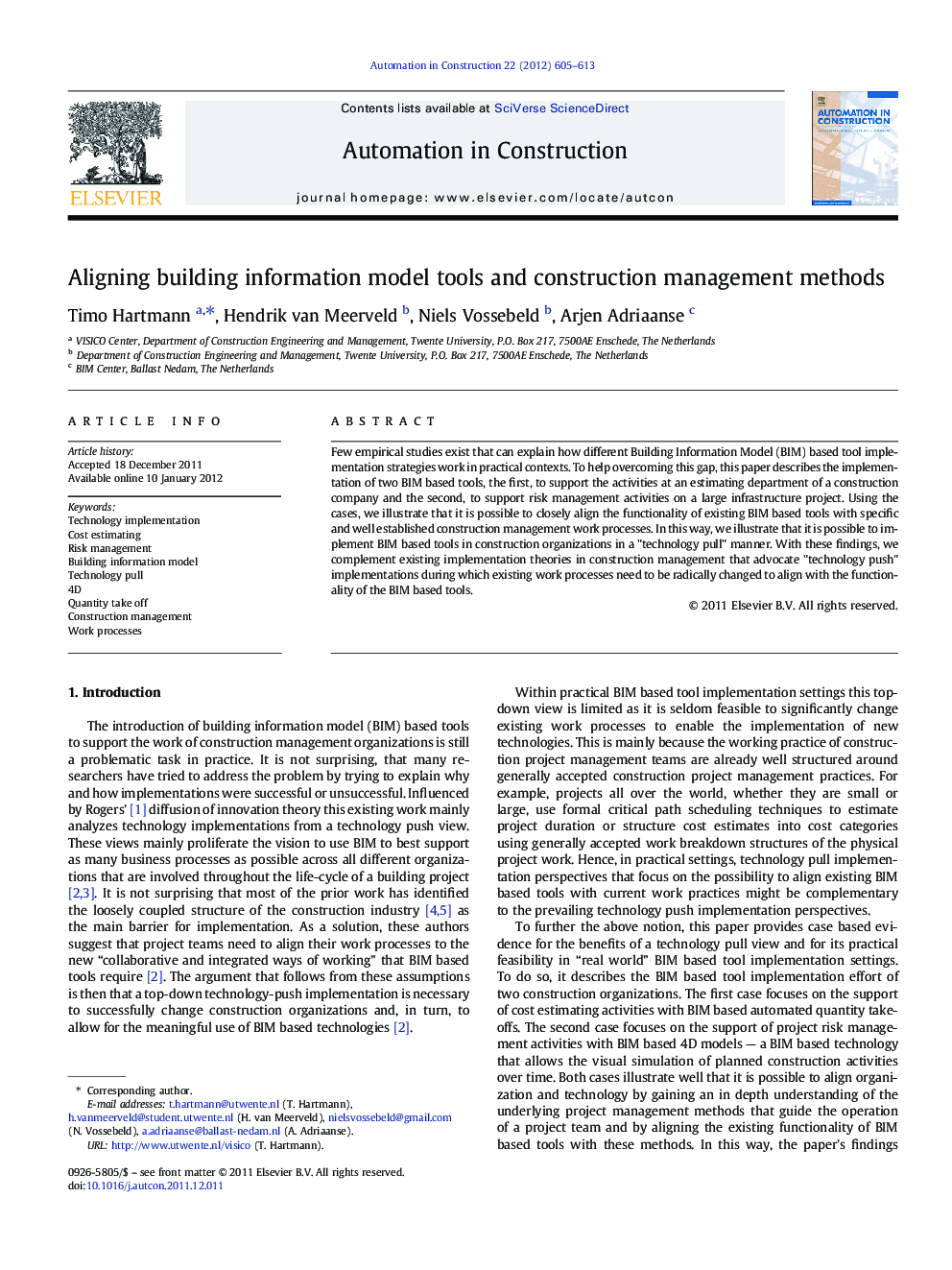| Article ID | Journal | Published Year | Pages | File Type |
|---|---|---|---|---|
| 246959 | Automation in Construction | 2012 | 9 Pages |
Few empirical studies exist that can explain how different Building Information Model (BIM) based tool implementation strategies work in practical contexts. To help overcoming this gap, this paper describes the implementation of two BIM based tools, the first, to support the activities at an estimating department of a construction company and the second, to support risk management activities on a large infrastructure project. Using the cases, we illustrate that it is possible to closely align the functionality of existing BIM based tools with specific and well established construction management work processes. In this way, we illustrate that it is possible to implement BIM based tools in construction organizations in a "technology pull" manner. With these findings, we complement existing implementation theories in construction management that advocate "technology push" implementations during which existing work processes need to be radically changed to align with the functionality of the BIM based tools.
► We implemented BIM project management tools on two projects in a bottom-up fashion. ► This allowed for the close alignment of BIM tools with existing work routines. ► This allowed practitioners to more readily understand the tool's features. ► This increased the practitioner's motivation and awareness. ► This allowed for the pro-active involvement of the practitioners.
